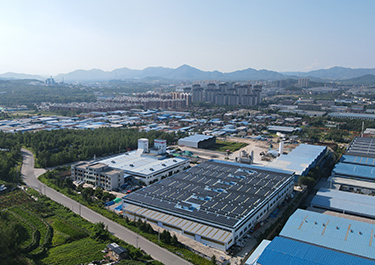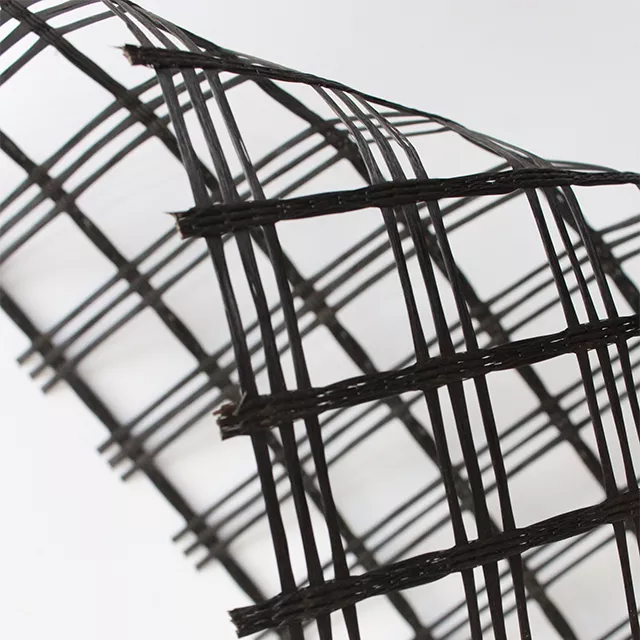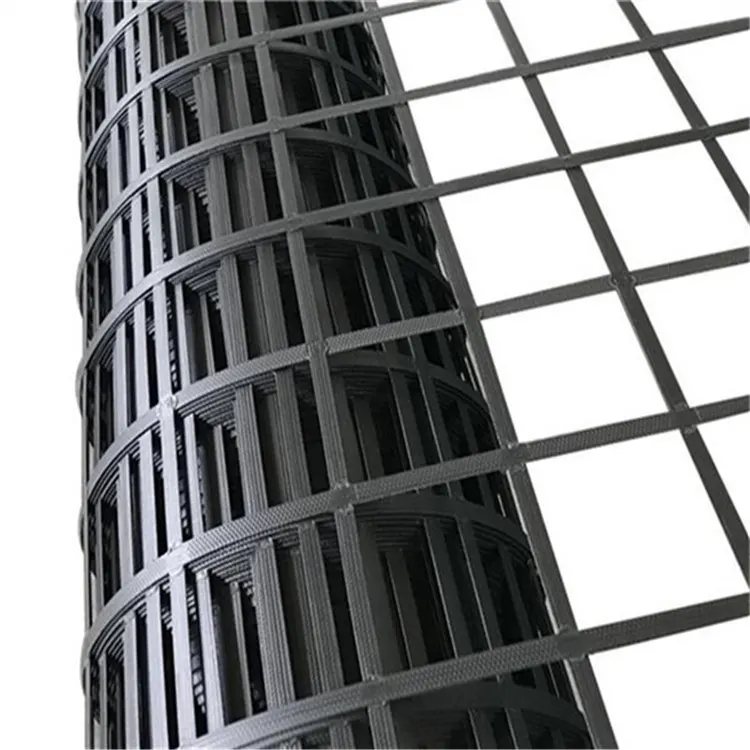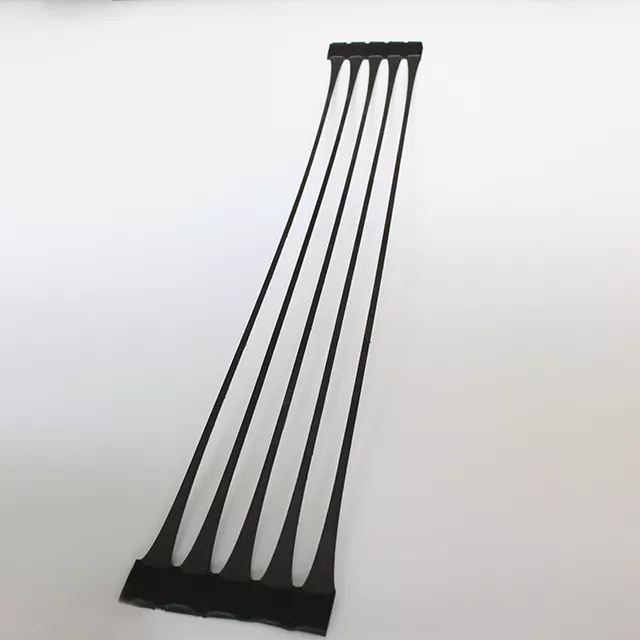Methods and Measures to Reduce Creep in Geocells
Creep in geocells is a familiar phenomenon, referring to the slow increase in material deformation over time under sustained load. Therefore, effectively mitigating creep is crucial for increasing the long-term stability and service life of structural materials. Consequently, we have specific requirements and standards for creep performance when selecting geocells. Today, Lianxiang Geotechnical will systematically explain methods and measures to reduce creep in PET geocells from multiple aspects, including material selection, structural design, construction technology, and comprehensive measures.


1. What is Geocell Creep?
Geocell creep refers to the phenomenon where, in engineering applications, when a geocell is subjected to long-term constant loads from overlying fill materials, vehicles, buildings, etc., the polymer sheets (reinforcing strips) gradually and continuously stretch and elongate over time. Excessive creep during the use of geocells weakens their reinforcement effect, leading to settlement or uneven deformation of the entire reinforced structure (such as roadbeds and slopes) far exceeding the design expectations. As deformation increases, the tensile strength of the cell actually decreases gradually. The "short-term ultimate strength" used in the design cannot be maintained under long-term loads. If the load is too large or the material has poor creep resistance, the cell may prematurely enter the "accelerated creep stage," resulting in brittle or ductile fracture, leading to catastrophic consequences such as slope collapse and roadbed instability. Therefore, controlling creep becomes extremely important.
2. Source Control: Selecting Materials with High Creep Resistance
2.1. PET (Polyester) - King of High Creep Resistance
- Chemical Structure: Its molecular backbone contains rigid benzene rings, resulting in strong intermolecular forces.
- Creep Resistance: Optimal. Under the same load and time, the creep of PET cells is typically much lower than that of polyolefin (PP/HDPE) cells. It has the highest retention rate of "long-term design strength."
- Advantages: Extremely high tensile modulus (high stiffness), small deformation under stress, excellent long-term durability, and resistance to stress relaxation.
- Disadvantages: Slightly lower resistance to strong alkalis (but performs well across most soil pH ranges); price is generally higher than PP and HDPE.
- Suitable Applications: Permanent projects, heavy-duty road/railway subgrades, steep slopes, bridge approach slab treatment, projects with extremely high requirements for post-construction settlement.
2.2. PP (Polypropylene) - An Economical and Practical Choice
- Chemical Structure: Linear hydrocarbon chains, more flexible than PET, more rigid than HDPE.
- Creep Resistance: Above average. Better than HDPE, but significantly inferior to PET. It is currently the most widely used balanced choice on the market.
- Advantages: Good rigidity-toughness balance, excellent resistance to acid and alkali corrosion, high cost-effectiveness.
- Disadvantages: Prone to aging under UV and oxygen conditions (can be addressed by adding anti-aging agents such as carbon black); low-temperature brittleness (caution required in cold regions).
- Suitable Applications: General highway subgrades, slope protection, river management, foundation treatment under moderate loads, and most other common engineering projects.
2.3. HDPE (High-Density Polyethylene) - High Toughness, Low Creep Resistance
- Chemical Structure: Low branching, flexible molecular chains.
- Creep Resistance: Relatively poor. Under long-term loads, its molecular chains are more prone to slippage, leading to greater creep.
- Advantages: Extremely high toughness (strong resistance to impact and fracturing strain) and flexibility, excellent chemical corrosion resistance and impermeability, good low-temperature performance.
- Disadvantages: Low tensile modulus, low stiffness, prone to large deformation.
- Applicable Scenarios: More suitable for shallow ecological slope protection, vegetation restoration, or special occasions requiring the utilization of its flexibility and impermeability, where deformation requirements are not high. Not recommended for reinforced structures subjected to long-term high tensile stress.
3. Processing Method: Select a high creep-resistant processing technology
Knowing only the material type is not enough; special processing technology is also needed for production. Precise control of various processing data and raw material formulations is essential to produce products with high creep resistance.
3.1. Request "Long-Term Design Strength" Data
- This is the core basis for material selection. Don't just look at the material's "ultimate tensile strength."
- What is long-term design strength? It refers to the safe and reliable strength a material can provide after considering creep, aging, and other reductions at a specific design life (e.g., 100 years) and a specific temperature (e.g., 20°C).
- How to obtain it? Request a long-term creep test report issued by an authoritative third-party testing institution from the manufacturer. The report will provide the strength retention rate or the direct design strength value for different years.
3.2. Material Identification
- Density Method: PET's density (~1.38 g/cm³) is much greater than PP (~0.91 g/cm³) and HDPE (~0.95 g/cm³). It will sink in water, while the latter two will float. This is a simple preliminary identification method.
- Combustion Identification: PET burns with black smoke and a sweet, aromatic smell, and is self-extinguishing when removed from the flame. PP burns with a bright flame and a paraffin-like odor. This method requires professional operation.
3.3. Consider Modified Materials
- Some manufacturers modify materials like PP through blending and the addition of nanofillers to improve their stiffness and creep resistance. These new technologies are worth considering, but long-term test data should be the primary basis for assessment.
4. Optimize Design: Reduce Actual Stress Level of Geocells
Through proper design, the stress experienced by the geocell during operation should be significantly lower than its long-term design strength. Reducing the actual stress level of the geocell is one of the most effective strategies for controlling creep and ensuring long-term engineering safety. When the actual stress experienced by the geocell is far below the long-term design strength of the material, creep deformation becomes very small and stable.
4.1. Increase Geocell Height:
- Under the same load, taller geocells can provide greater lateral confinement and better stress diffusion, thereby reducing the tensile requirements on the geocell sheet itself and directly reducing the creep driving force.
4.2. Reduce Weld Spacing (Cell Size):
- Smaller cell units mean each cell bears a smaller load, while denser reinforcement distribution more effectively confines the fill material, creating a stronger "plate effect" and reducing local stress.
4.3. Perform Accurate Load Calculations:
- Fully consider all possible working conditions, including static loads, dynamic loads, impact loads, and water level changes, to avoid the cell being under-stressed due to insufficient design load.
5. Construction Assurance: Ensuring Full Cell Performance
Improper construction is one of the most common and fatal causes of premature failure and rapidly accelerated creep in geocells. Even with the best materials and the most precise design, poor construction can render everything useless.
5.1. Ensure Sufficient Tensioning:
- After laying the geocells, they must be fully tensioned, unfolded, and fixed using anchor piles or other tools to achieve the predetermined laying area. Insufficient tensioning will cause additional, undesigned tensile deformation when the geocells are under load, accelerating creep.
5.2. Selecting and Thoroughly Compacting Suitable Fill Material:
- Select well-graded, coarse-grained soil (such as gravel or crushed stone) with a high angle of friction as the fill material. This type of fill material has a large internal friction angle, which allows for stronger interlocking with the cells, converting most of the load into lateral pressure on the cells rather than longitudinal tension.
- Layered filling and compaction are crucial. The compaction degree must meet design requirements to ensure the cell-fill material composite forms a unified load-bearing structure. If the fill material is loose, the load will be mainly borne by the cell reinforcement, easily leading to stress exceeding limits and rapid creep.
5.3. Implementing a Sound Drainage System:
- Water is a major enemy of engineering projects. Accumulated water softens the fill material, reduces its strength, and can generate dynamic water pressure, significantly increasing the load on the cells. A good drainage system (such as base course drainage and slope drainage ditches) can keep the structure in a dry and stable state for a long time, and is an indirect but important measure to control creep.
6. Comprehensive and Auxiliary Measures
6.1. Combined Use with Other Reinforcing Materials:
- In projects with extreme loads or extremely high deformation requirements, geogrids can be laid above, below, or inside geocells. The geogrid bears the main tensile stress, while the geocells primarily restrain and disperse stress. Working together, they can very effectively control total deformation and creep.
6.2. Controlling Ambient Temperature:
- The creep of polymer materials is highly sensitive to temperature. Where possible, taking insulation or cooling measures (such as using high thermal resistance surface materials in pavement base courses) can slow down the creep rate.
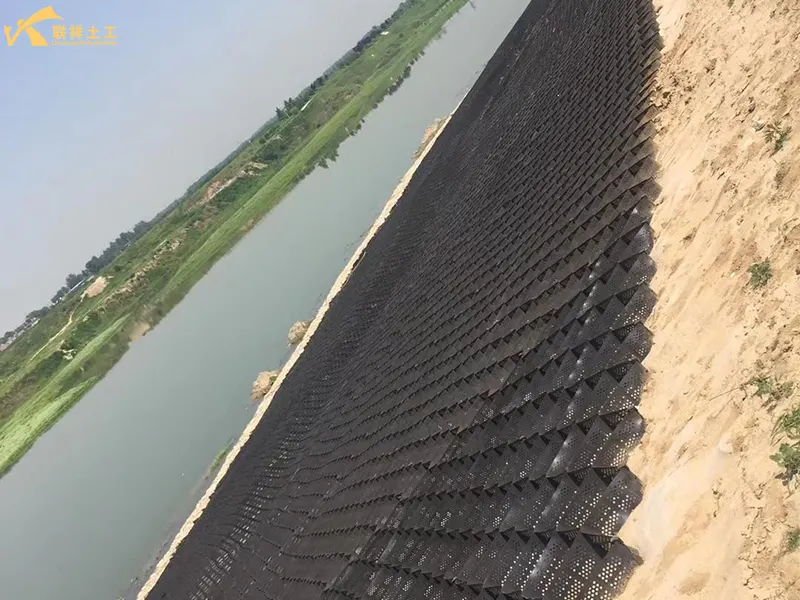

7. Conclusion:
For any project requiring long-term stability and deformation control, PET geocells should be given priority. Although the initial investment may be slightly higher, their superior creep resistance ensures the safety of the structure throughout its entire life cycle, avoiding huge maintenance and repair costs due to excessive settlement. From a total life cycle cost perspective, it is often the most economical choice. The above are the methods and measures compiled by Lianxiang Geotechnical to reduce creep in geocells. By employing these multi-pronged approaches, creep in geocells can be suppressed to the greatest extent possible, ensuring the long-term safety and stability of reinforced soil structures. We hope this information will be helpful when using geocells in the future.
Written by
SHANDONG LIANXIANG ENGINEERING MATERIALS CO., LTD.
Kyle Fan
WhatsApp:+86 139 5480 7766
Email:admin@lianxiangcn.com
Contact
-
WhatsApp
-
E-MailE-Mail:admin@lianxiangcn.com
-
WeChatWeChat:18554180188

